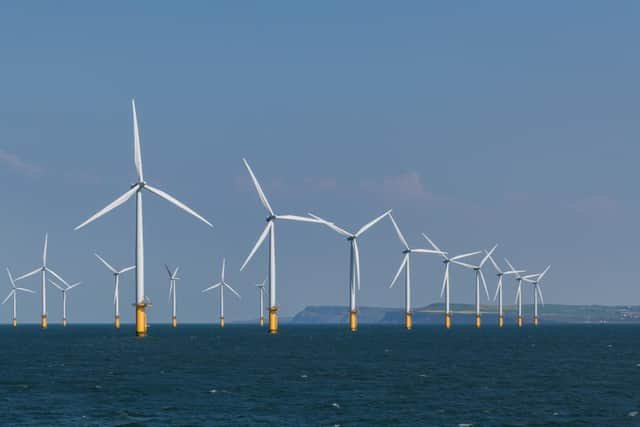Could all UK homes be powered by wind by 2030? Boris Johnson’s green energy plan explained - and if it could work
Every home in the UK will be powered by offshore wind farms within 10 years, the Prime Minister has pledged.
Speaking at the Conservative party conference, Boris Johnson announced a green energy revolution that will create thousands of jobs.
What is the Green Energy Plan?


Advertisement
Hide AdAdvertisement
Hide AdThe new green energy plan will see £160 million invested in upgrading ports and factories across the country for building wind turbines.
The scheme will see money invested into manufacturing in Teesside and Humber in northern England, as well as sites in Scotland and Wales, with the aim of creating 2,000 jobs in construction, while supporting 60,000 more.
The Prime Minister also said the government is raising its target from 30 gigawatts for offshore wind power capacity to 40 gigawatts by 2030.
Mr Johnson said: “I can today announce that the UK government has decided to become the world leader in low cost clean power generation - cheaper than coal and gas - and we believe that in 10 years’ time offshore wind will be powering every home in the country, with our target rising from 30 gigawatts to 40 gigawatts.
“You heard me right. Your kettle, your washing machine, your cooker, your heating, your plug-in electric vehicle – the whole lot of them will get their juice cleanly and without guilt from the breezes that blow around these islands.
“We will invest £160 million in ports and factories across the country, to manufacture the next generation of turbines.
“And we will not only build fixed arrays in the sea, we will build windmills that float on the sea – enough to deliver one gigawatt of energy by 2030, 15 times as much as the rest of the world put together.”
The announcement marks a stark change in views from the Prime Minister, who previously said wind farms “failed to pull the skin off a rice pudding” back in 2013.
Advertisement
Hide AdAdvertisement
Hide AdIn his speech he said: “I remember how some people used to sneer at wind power, 20 years ago, and say that it wouldn’t pull the skin off a rice pudding.
“They forgot the history of this country. It was offshore wind that puffed the sails of Drake and Raleigh and Nelson, and propelled this country to commercial greatness.”
Is it feasible to achieve clean energy for all homes by 2030?
The grand plans announced by the government suggest that energy usage in the UK will be transformed over the next decade, with promises the country will become the world leader in low cost clean power generation.
But is the plan to power every UK home by wind turbines in the next 10 years feasible?
Experts at University of Leeds predict that wind power will generate enough electricity by 2030 to power every home in the country.
The government target is based on the wind farms producing the equivalent of every UK home’s collective electricity needs - even though green energy also helps power things like businesses, offices and shops.
Currently, wind power generates 20 per cent of the country’s national electricity needs, whereas households make up one third of power consumption. So wind farms only need to generate a little bit more to meet Boris Johnson’s target within a decade.
Advertisement
Hide AdAdvertisement
Hide AdDr Paul Brockway, from the School of Earth and Environment at the University of Leeds, said: “UK wind power provided 20 per cent of UK electricity in 2019. About one third of electricity consumption in the UK is from people’s homes, so a higher use of wind (40GW by 2030) would make around 30 per cent of all electricity from wind.
“So it’s pretty close to the claim of powering all UK homes from UK wind by 2030.”
Professor John Barrett, Chair in Sustainability Research, University of Leeds said that the figures announced by the government have been made to sound more impressive than they are in reality.
He said that even if wind produced enough energy to power every home in the UK, it will still only amount to nine per cent of all energy demand in the country, because the government figures only look at electricity, rather than all energy like coal and nuclear.
Prof Barrett added: “People are confusing energy with electricity. Wind turbines will provide electricity that, according to the UK Government’s own figures, will be only 24 per cent of household energy demand in 2030.
“In terms of total energy demand for the UK, providing all household electricity by wind is equivalent to nine per cent of all energy demand. Saying that we are going to provide nine per cent of UK energy demand by wind by 2030 isn’t so exciting.
“I’d prefer the government to release a report that shows how they are going to reach carbon budgets, this is long overdue.”
Critics have also warned that achieving 40 gigawatts of offshore wind capacity will require around £50 billion of capital investment, plue the completion of a turbine every weekday for the next 10 years.
The £160 million investment proposed by the government would not be enough to achieve what is required, and falls far short of the billions that analysts say is necessary.
